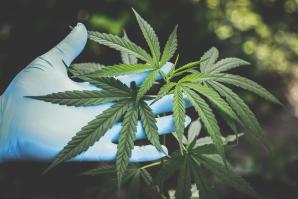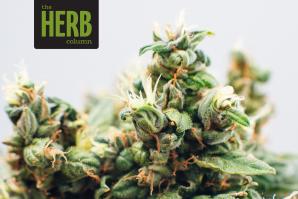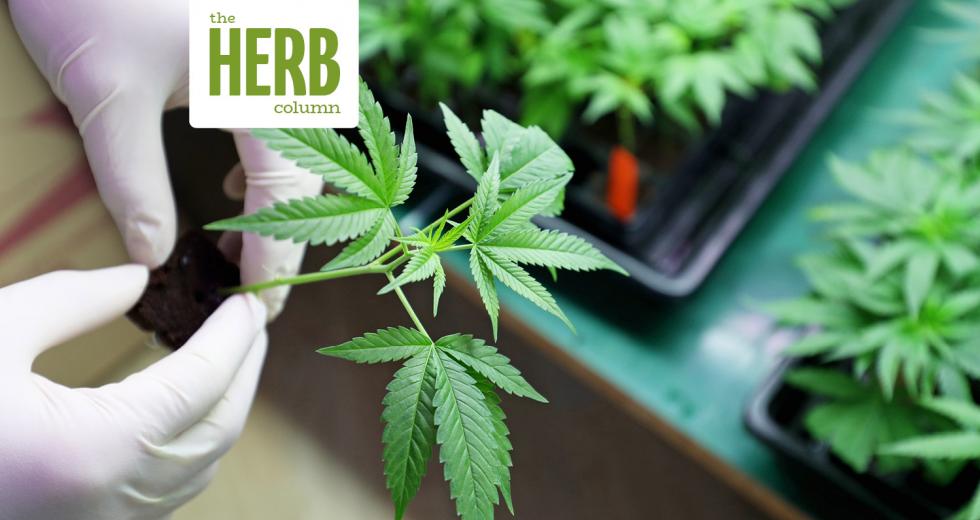Matthew McGregor, a strategic account adviser with the Sacramento Municipal Utility District who works with commercial cannabis operations in Sacramento County, has seen a dramatic increase in the number of customers in less than four years.
“The first conversation, in February 2016, came in as a call for help, to be honest — to get some answers about how to upgrade,” he says. “That facility led to two, and two led to four, and now I’m working with close to 200 operators within our territory.”
SMUD board member Gregg Fishman says when Proposition 64 was placed on the ballot the utility anticipated the influx of emerging cannabis business from the newly legalized industry could present challenges. He says the board discussed strategies for meeting energy demands that had the potential to seriously affect areas where cultivation operations are concentrated.
“When you take what used to be a simple warehouse and put in a cannabis operation, the load for that building can double, triple, and quadruple, depending on how much lighting they’re installing and what kind of lighting,” Fishman says. “So it was an issue from an operational and a technical standpoint.”
SMUD has goals in place to reduce greenhouse gas emissions and increase the percentage of power it generates from renewable energy sources, which means the utility helps cannabis-growing customers avoid peak demand times when the utility must rely on dirtier sources of energy.
“To the extent that we can help our customers reduce their peak demand, that benefits the corporation, it benefits the community that we serve, and it benefits the environment that we’re trying to protect,” Fishman says. Comstock’s spoke with McGregor about how SMUD and its customers in the cannabis industry are making great strides.
What’s your most popular product or service among SMUD’s offerings to the cannabis industry?
We look at our cannabis operations exactly the same way as our other commercial customers — no better and no less. They are eligible for our Greenergy program, our Custom Incentive Program and our Savings By Design program — pretty much all of the benefits that every commercial customer has in SMUD’s territory. My role is to be the emissary between the facilities, their operations and all things SMUD. If they have a question about customer service, upgrading their facility, additional service or power, energy efficiency incentives, electric vehicles or green energy, those requests all come across my desk, and it’s my job to either answer the question or go find an answer.
One of the ways you’re offering to help local cannabis growers is by encouraging the use of light-emitting diode lamps. Can you talk about that?
I started walking through facilities in 2016, and up until recently the majority of facilities were being built out with high-pressure sodium fixtures, which are very energy intensive. So we started to ask the question, as we do for all of our commercial customers: What is the emerging or underutilized technology? Their load is predominantly lighting, and knowing that LEDs were on the market, we had a lot of questions about them. What was the adoption rate? What was the customer’s experience with them to date? Is it a viable technology?
After receiving feedback from multiple customers, we put together R&D studies to better understand the lighting systems and how they interact with the plants, and with the operators’ facilities as well. So at this point, with those studies, we’re offering incentives for LED technology.
I tell most of our customers that while we haven’t been growing cannabis and probably never will, we have been doing lighting and HVAC projects for over 70 years. We can help them understand the science behind growing cannabis indoors after they’ve already perfected the art.
Have there been breakthroughs in LED technology specific to the industry, around efficiently providing the spectrum that’s required to grow cannabis?
Absolutely, and the efficiencies are gaining every day. If we look at the horticulture lighting market even three years ago, it’s like looking at a 10-year-old laptop. The technology was coming about, but it wasn’t terribly strong. Fast forward to today, and we’re better understanding the science behind lighting and how it interacts with the plants.
We have a better understanding of how different spectrums can affect the plants. They were used to seeing a very narrow-band spectrum from a high-pressure sodium fixture, which looks reddish; now we have white-light LEDs that include a broader spectrum. So the plant sees a little bit of red, a little bit of blue, a little bit of green, and uses that to develop different carbohydrates and produce different things within the flower.
From an energy-use perspective, what’s the difference between high-pressure sodium lighting and LED?
Typically, it’s about a 30- to 40-percent reduction on each fixture. Your baseline high-pressure sodium is 1,000 watts and most LED fixtures come in around the 650-watt mark, plus or minus.
What we’re also seeing on that is that because there is a higher-performing plant, it’s actually transpiring more. On the surface, that doesn’t sound like an energy problem, but when you’re trying to maintain temperature and humidity within the grow spaces, and you have a highly complex HVAC system that is designed to do so, introducing more moisture into the air creates additional load, but also cools the space. So transitioning to an LED room there are additional considerations that our operators have to take into account.
I gather that you’re rapidly developing the expertise to be able to help the operator get through this process.
Humbly, yes.
Can you give me an early success story? What was the first operation where you felt that you had proof of concept and were able to say, “OK, this is really working?”
Amplified Farms truly was one of the first successes that we saw. I think the collaboration between Amplify and SMUD to test out the LED fixtures was huge for the entire industry. When I started looking at LED fixtures, all of the information — on increases in production and decreases in energy use — came from the manufacturer’s perspective. The fact that we were able to come in as a third party and monitor the facility to better understand how it was working was truly a success.
We started the test in the summer of 2017, and it was a risk from the operator’s perspective, because with such a high-value crop, if there was a mistake it was going to mean some really high-dollar revenues they could potentially miss out on. Going through the test, they were meticulous in making sure their room was going to have its best chance. In the end, they found that the quantity was comparable or increased, and the quality was increased on the product as well. So it really answered the question: Is the technology viable? And now we’re working with all of our operators collaboratively on transitioning their lighting systems.
You mentioned this had industry-wide implications; was your case study used in other markets outside this region?
Yes. The first one was a consultant with the Massachusetts Department of Energy, which used our study to form regulations around energy unit usage and lighting power density. He was able to use our study to take the proof of concept to their regulators and show that this is viable technology, and then to work with their cultivators.
What would you say are your biggest opportunities and greatest challenges?
Right now, the industry is still in its infancy. We have a small number of operators that are coming online at scale. But a majority of facilities that are proposed and approved are not yet built out. They’re in a myriad of planning and development processes for their facilities. I think the biggest opportunity is further collaboration with our customers to better understand their processes so, as an energy company, we can support them.
Recommended For You

Silver Stoners
Local dispensaries and senior living facilities respond to increased cannabis use among older generations
From senior discounts to Weed 101 workshops, dispensaries, delivery services and assisted living facilities in the Capital Region are navigating business and policy implications of the spike in interest among seniors.

California Seeks to Revive Compassionate Cannabis Programs
When officials began taxing and regulating cannabis after voters approved it for recreational use, donations to compassionate cannabis programs fell sharply. Now the state is attempting to revive those services for low-income medicinal users.

The Herb Column: Higher Education
Budtenders may become the new drug educators in Sacramento
The legalization of adult-use marijuana in November 2016 created an opportunity for California to rethink drug education programs, as a portion of the tax revenue from the new commercial cannabis market must go to education programs.

The Herb Column: Where Did All the Cannabis Watchdogs Go?
Why Comstock’s is launching THC, a monthly column on the cannabis business
Getting reliable information about cannabis may be more important than ever. But finding reliable cannabis information has become harder because of another trend — the decimation of newsroom staffs.



